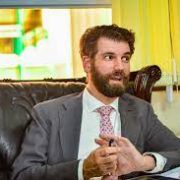Yeeey!!!!!We Survived!
“Stroke was the wake-up call I needed to make a change in my lifestyle. I’ve since made my children aware of the risks, and I try to impact positive changes for their healthy future”.
Lillian Simiyu-A stroke survivor
One morning, May 2015, Lillian Simiyu a 45 years old mother of 3, woke up with numbness in her left leg. At first, she thought she had slept in a wrong position, but when the numbness spread to her left arm and then the left side of her face, she realized something more serious was going on. She called for her husband, who drove her to Moi teaching and referral hospital.
After a series of tests, the doctors found a small blood clot that they suspected had caused Lillian’s stroke. But they feared she was at risk of having another stroke, so Lillian stayed at the hospital for two nights for observation.
It was there that a kind but blunt neurologist gave her some advice. According to Lillian, the doctor said, “You know, you are 45 years old. I really should not even be seeing someone like you,” she recalls. But if you only walk 30 minutes a day, this probably will not happen again.’”
Before her stroke, Lillian was working long hours in a stressful job. She was about 90 kg overweight and had high blood pressure. The morning after she checked out of the hospital, Lillian started walking around her neighborhood every day.
Walking for 30 minutes was a challenge at first, but she kept at it, and after a year, she decided to try jogging. Today, Lillian runs 4 to 5 miles several times a week.
Lillian also learned to read food labels and adjusted the way she cooks for her family, swapping out certain ingredients with heart-healthy alternatives. According to her, her father suffered a similar stroke when she was a child, and she makes sure to explain the reasoning behind these changes to her 3 children.
“I make my children aware of the risk that they may have one day, because of Grandpa and now me,” she said. “I am trying to make changes so they can learn how not to have the same future.”
Lillian shares her story as often as possible to raise awareness about the signs of stroke and stroke prevention. She tries to help people understand that lifestyle changes, including getting healthy.
“It takes small, incremental steps,” she said. “Rather than saying, ‘I’m going to run a marathon next week,’ how about, ‘you know, if I can walk for 30 minutes and not collapse, that’s a good thing. And then maybe next month I can walk a little bit more, “says Lillian.

Joseph Koech’s Experience-Stroke survivor
“I Don’t Want Anyone to Go through What I’ve Gone Through”, says Joseph.
In November 2017, Joseph Koech, a 32-year-old marketing executive had completed his master’s degree at Moi University. As young and ambitious as he was, Joseph had been so focused on his career that he ignored an unusual physical symptom and signs of stroke that had started developing.
One evening, after work, as he was resting, his room became completely dark, and before he could figure out what it was, his one eye had completely gone blind. His vision returned after a while then booom! his left arm went limp. It was when his neighbor knocked at his door and noticed that his face was drooping, that Joseph knew something was seriously wrong.
At the emergency room, his symptoms improved, but Joseph stayed the night as a precaution. The next day, he woke up in the intensive care unit. Joseph says he had suffered a stroke caused by dissection, or a tear in the wall of one of the carotid arteries (arteries that bring blood to the brain), which can block blood flow to the brain. Doctors treated him with medicine to prevent clots and considered performing a procedure to help relieve the swelling in his brain.
His family feared for his life, but after several days in the intensive care unit, he was able to transfer to a rehabilitation center. Eventually, he returned home and continued therapy at an outpatient facility.
Joseph had been an award-winning athlete in school, but as an adult, he says, “I had a love/hate relationship with being fit.” He would gain weight, start exercising rigorously, and lose weight again. His unhealthy eating habits and a leg injury didn’t help.
After his stroke, Joseph changed his diet, and he now walks 5km every day, rides a stationary bike, and lifts weights. To many people he meets, Joseph’s physical recovery seems remarkable. But John continues to experience memory problems, as well as difficulty with vision and tasks such as sorting email and other reading materials.
What bothers him the most, however, are the memories of his heartbroken loved ones and the helplessness they felt.
Today, through his volunteer work for the Africa Heart Association, Joseph raises awareness about the symptoms of stroke and ways to prevent stroke.
He also promotes the importance of having more grocery stores in underserved communities.
His goal is to protect others, especially men, from the experience his friends and family had:























Great read!! Stroke awareness is key. There’s life and hope after a stroke.
Thank you doc
Journalists tell stories and yours is a nice read for sure.
Thank you for believing in me😊